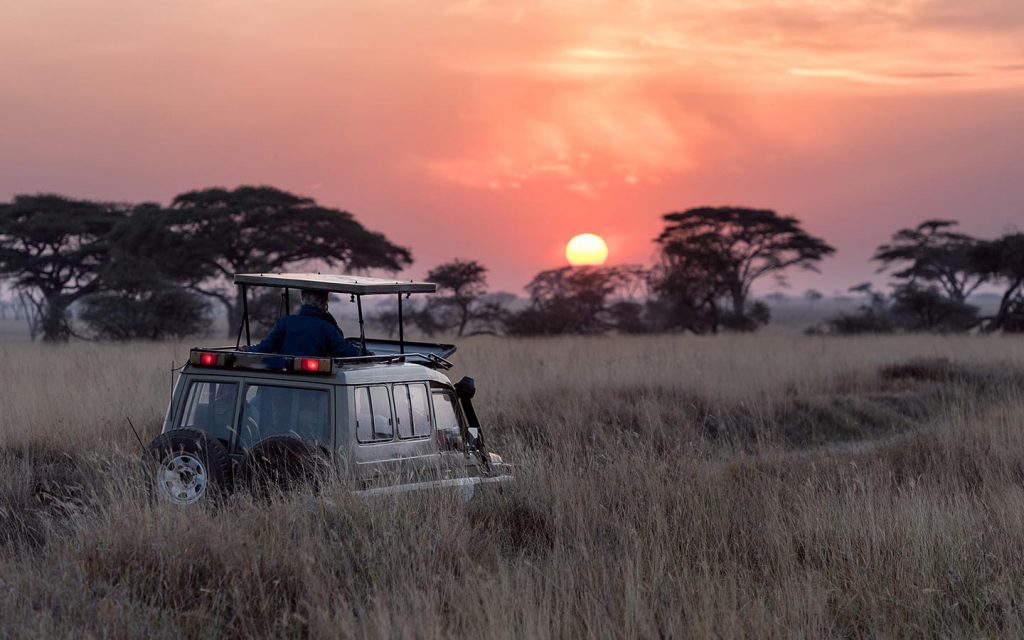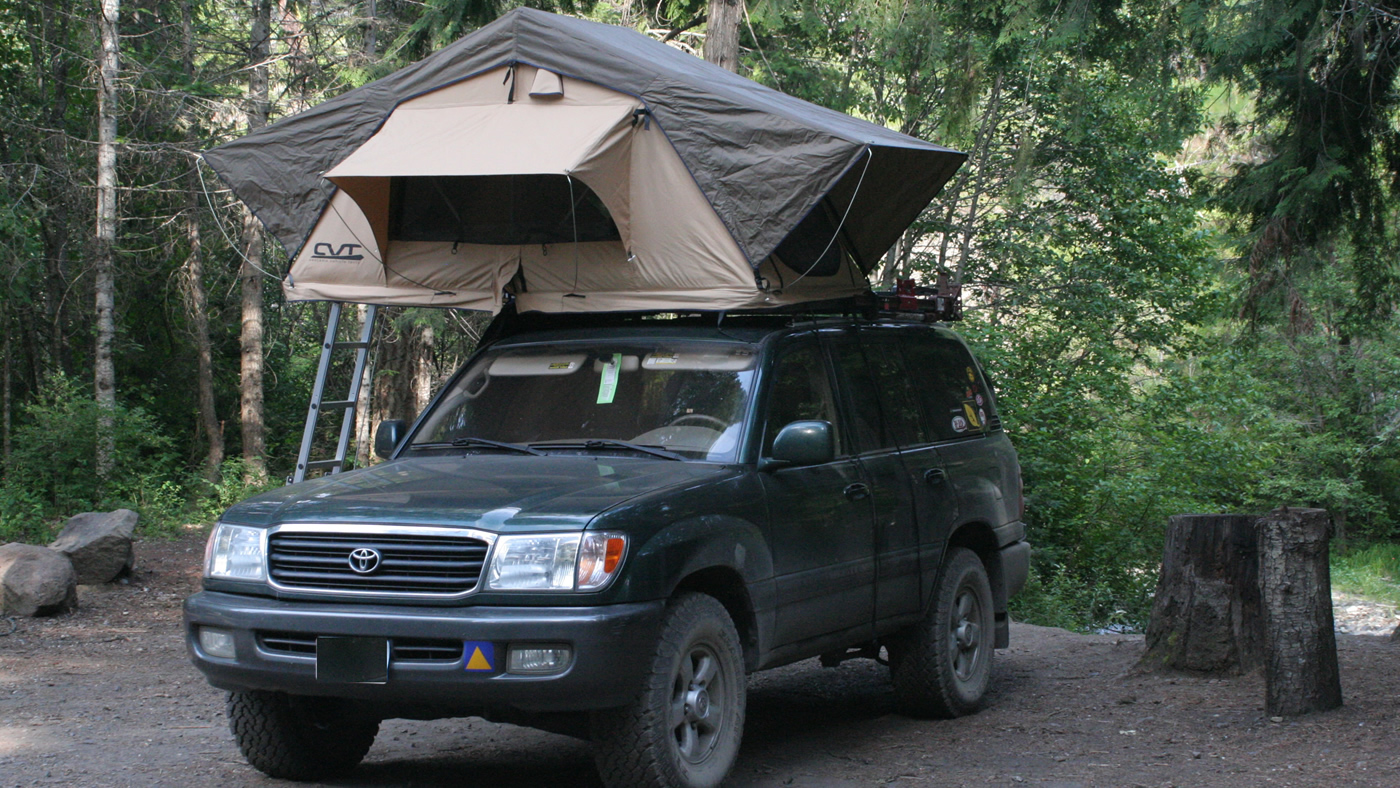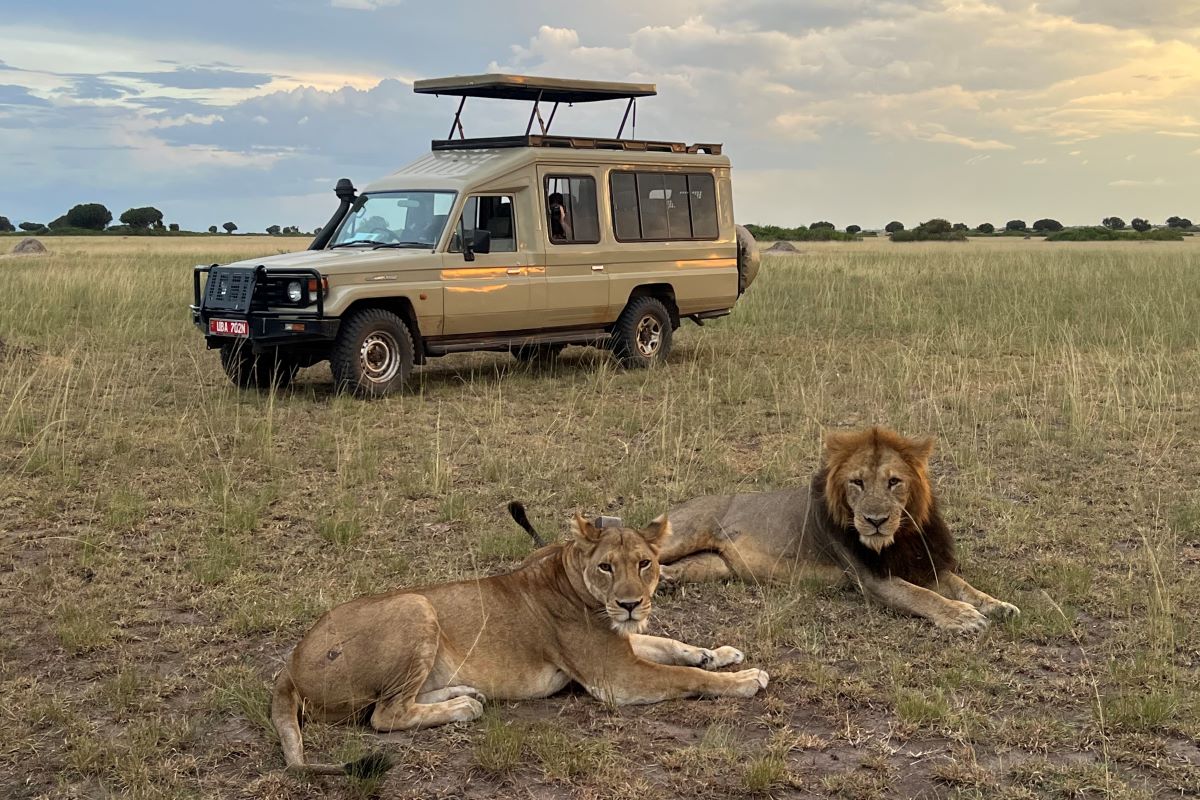Chimpanzee Trekking & Forest Walks in Murchison Falls Park
Nestled in northwestern Uganda, Murchison falls national park stands as the country’s largest and oldest conservation area, covering an impressive 3,840 square kilometers. While the park is renowned for its spectacular waterfall where the mighty Nile River forces its way through a narrow 7-meter gorge, it also harbors one of Uganda’s most thrilling wildlife experiences: chimpanzee trekking in the pristine Budongo Forest.
The Budongo Forest: A Primate Paradise
The southern sector of Murchison Falls national park encompasses part of the vast Budongo Forest Reserve, one of Uganda’s largest surviving natural forests. This ancient woodland, dominated by towering mahogany and ironwood trees, creates a cathedral-like canopy that filters sunlight into dancing patterns on the forest floor. The forest’s rich biodiversity makes it an ideal habitat for over 800 chimpanzees, alongside other primates including olive baboons, red-tailed monkeys, and black-and-white colobus monkeys.
Budongo Forest’s unique ecosystem, characterized by its mix of tropical rainforest and woodland savanna, provides the perfect environment for chimpanzees to thrive. The forest’s elevation of 1,000 to 1,300 meters above sea level creates a cooler climate that supports diverse vegetation, ensuring year-round food sources for the park’s primate populations.
The Chimpanzee Trekking Experience
![]()
Preparing for Your Trek
Chimpanzee trekking in Murchison Falls park begins early in the morning at the Budongo Eco Lodge or the park’s headquarters at Kaniyo Pabidi. Before venturing into the forest, experienced guides provide essential briefings about chimpanzee behavior, safety protocols, and trekking etiquette. Visitors are grouped into small parties of six to eight people, ensuring minimal disturbance to the chimpanzees and an intimate wildlife experience.
The trek requires moderate physical fitness as paths can be challenging, with uneven terrain, fallen logs, and steep sections. Proper hiking boots with good grip are essential, as forest floors can be slippery, especially during the rainy seasons from March to May and September to November.
Into the Forest Depths
As you step into Budongo Forest, the immediate sensory transformation is remarkable. The temperature drops noticeably under the thick canopy, while the symphony of forest sounds envelops you – from the haunting calls of hornbills to the rustling of leaves as various primates move through the treetops. Your guide, often a local community member trained in primate tracking, uses their intimate knowledge of chimpanzee behavior and forest navigation to locate the troops.
The duration of chimpanzee treks varies significantly, ranging from one to six hours depending on the location of the chimpanzee communities. These intelligent primates are constantly on the move, foraging for food and establishing their daily territories. The anticipation builds as guides point out fresh knuckle prints in muddy sections, broken branches indicating recent feeding, and the distinctive pant-hooting calls that echo through the forest.
The Magical Encounter
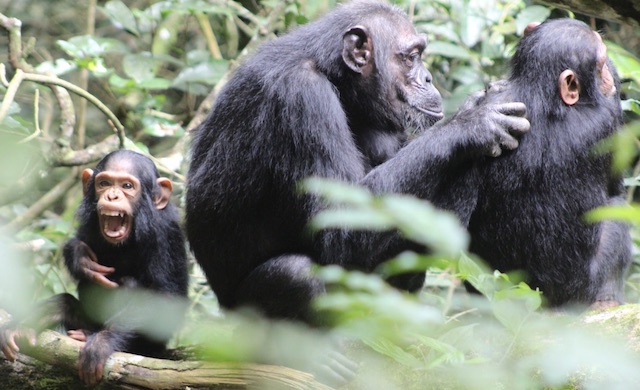
The moment you first spot chimpanzees in their natural habitat is truly unforgettable. These remarkable primates, sharing 98.8% of their DNA with humans, display incredibly complex social behaviors that are fascinating to observe. You might witness mothers tenderly grooming their young, juveniles engaged in playful antics, or the impressive alpha male asserting his dominance through chest-beating displays.
Chimpanzees in Budongo Forest have been habituated to human presence through years of careful conditioning, allowing for closer observation without causing stress to the animals. Visitors can spend up to one hour observing the troop, maintaining a respectful distance of at least 7 meters as recommended by international primate conservation guidelines.
During your observation time, you’ll likely see various behaviors including feeding, where chimpanzees demonstrate remarkable tool use – fashioning twigs to extract termites or using stones to crack nuts. Their communication through facial expressions, gestures, and vocalizations reveals the sophisticated social structure that governs chimpanzee communities.
Forest Walks: Exploring Beyond the Chimpanzees
The Broader Ecosystem
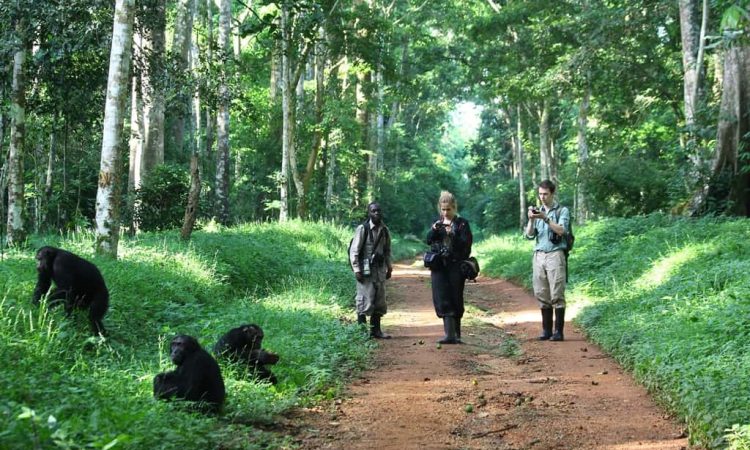
While chimpanzees are undoubtedly the stars of Budongo Forest, the ecosystem offers much more to discover through guided forest walks. These walks, which can be combined with chimpanzee trekking or enjoyed as separate activities, provide opportunities to explore the forest’s incredible biodiversity at a more leisurely pace.
The forest hosts over 360 bird species, making it a paradise for birdwatchers. The rare and sought-after chocolate-backed kingfisher calls Budongo home, alongside other forest specialists like the white-thighed hornbill, yellow-spotted barbet, and the Puvel’s illadopsis. Early morning walks offer the best birding opportunities when species are most active.
Medicinal Plant Discoveries
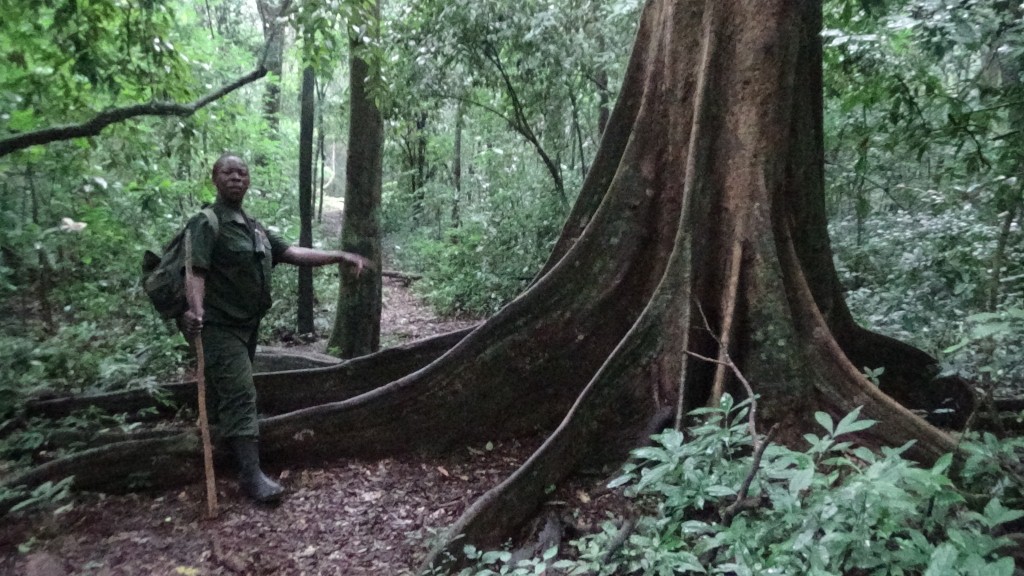
Local guides possess extensive knowledge about the forest’s medicinal plants, passed down through generations of traditional healers. During forest walks, you’ll learn about various species used in local medicine, from the bark of certain trees used to treat malaria to leaves that help with digestive ailments. This ethnobotanical knowledge highlights the critical importance of forest conservation for local communities who depend on these natural resources.
Butterfly and Insect Life
Budongo Forest supports an extraordinary variety of butterflies, with over 290 species recorded. Forest walks often reveal stunning displays of colorful butterflies, including the impressive African giant swallowtail and various species of charaxes butterflies. The forest floor and tree trunks reveal fascinating insect life, from industrious dung beetles to the occasional stick insect perfectly camouflaged among the vegetation.
Conservation and Community Impact
Protecting Our Closest Relatives
Chimpanzee trekking in Murchison Falls National Park serves a crucial conservation purpose beyond tourism. Revenue generated from permits directly supports conservation efforts, anti-poaching activities, and habitat protection. The habituated chimpanzee communities serve as ambassadors for their species, helping visitors understand the urgent need to protect these endangered primates.
Current estimates suggest that only about 5,000 chimpanzees remain in Uganda, making every conservation effort critical. The research conducted on Budongo’s chimpanzee populations contributes valuable data to global primate conservation strategies and helps inform management decisions for the park.
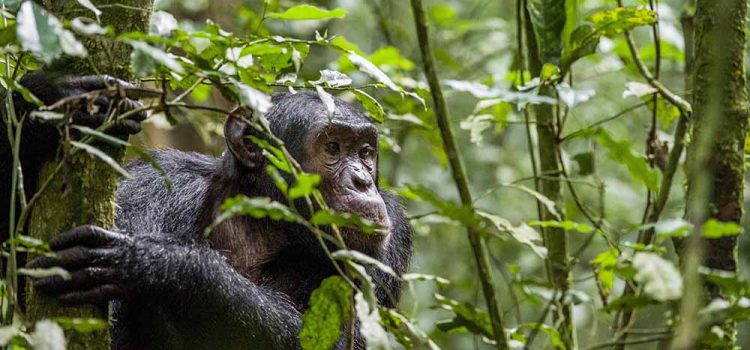
Community Benefits
The chimpanzee trekking program provides significant economic benefits to local communities surrounding the park. Many guides are local residents who have received specialized training in primate behavior and forest ecology. This employment opportunity provides alternative livelihoods to activities that might otherwise threaten the forest, such as logging or agricultural encroachment.
Community-based tourism initiatives ensure that a portion of tourism revenue directly benefits local villages through development projects like schools, health clinics, and clean water systems. This creates a direct incentive for communities to protect the forest and its wildlife.
Planning Your Visit
Best Times to Trek
While chimpanzee trekking is possible year-round, certain periods offer optimal conditions. The dry seasons from December to February and June to August provide easier trekking conditions with less muddy trails. However, the wet seasons can offer unique experiences with lusher vegetation and increased primate activity as food sources become more abundant.
Early morning treks, typically starting between 7:00 and 8:00 AM, are generally more successful as chimpanzees are most active during cooler parts of the day. The forest’s climate remains relatively stable throughout the year, with temperatures ranging from 18°C to 27°C.
![]()
What to Bring
Successful chimpanzee trekking requires proper preparation. Essential items include sturdy waterproof hiking boots, long pants and long-sleeved shirts to protect against thorns and insects, a lightweight rain jacket, insect repellent, and a good camera with extra batteries. Binoculars enhance the experience, allowing for better observation of chimpanzees high in the canopy.
It’s important to note that flash photography is prohibited as it can disturb the chimpanzees, and maintaining silence during encounters is crucial for the safety and comfort of both visitors and primates.
Permits and Booking
Chimpanzee trekking permits for Murchison Falls National Park cost $30 for foreign non-residents and must be booked in advance, especially during peak seasons. The Uganda Wildlife Authority manages permit allocation, and it’s advisable to book several months ahead of your planned visit.
The Lasting Impact
Chimpanzee trekking and forest walks in Murchison Falls National Park offer more than just wildlife viewing – they provide transformative experiences that connect visitors with our evolutionary cousins and highlight the urgent need for conservation. The ancient forests of Budongo serve as living laboratories where we can observe complex social behaviors, tool use, and communication patterns that mirror many aspects of human society.
As you emerge from the forest canopy, having spent precious time observing these remarkable primates in their natural habitat, you carry with you not just memories and photographs, but a deeper understanding of our responsibility to protect these endangered species and their rapidly disappearing habitats. The experience serves as a powerful reminder that in protecting chimpanzees and their forest homes, we ultimately protect a crucial part of our own natural heritage.
The combination of thrilling wildlife encounters, stunning natural beauty, and meaningful conservation impact makes chimpanzee trekking in Murchison Falls National Park an essential experience for any serious wildlife enthusiast or conservation-minded traveler visiting Uganda.
Contact us now by sending an email to info@mumwesafarisuganda.com or call us now on +256-700135510 to speak with us now.

